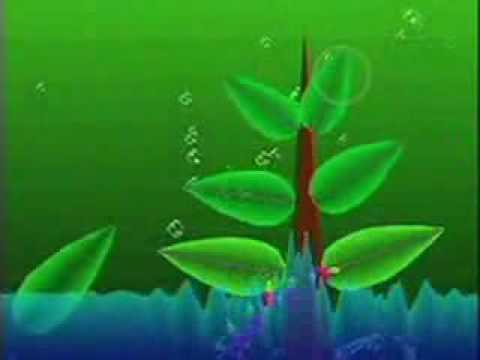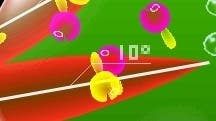Music Week: Learning to love Electroplankton's Hanenbow
The difficult second plankton.
Today in Music Week we're going back to 2005, to Nintendo DS, and to the experimental Electroplankton.
Even if Electroplankton wasn't about various things that live in the water, I suspect that looking down into its depths would still feel a lot like moving between different rockpools, each one its own little universe filled with unique creatures, swarming and multiplying. In 2005, when the game, directed by Toshio Iwai, an interactive media and installation artist, was released in Japan, sound toys were just starting to spark and judder in browsers and Flash players. Something was happening! And yet Electroplankton already felt very different. It wasn't just sound, it was sound and life. As you moved between the scattered electroplankton and worked out what noises they might make, you were also learning what they liked to do, and how they lived.
Some of these creatures I loved immediately. Take Tracy, who opens the game, a little kite-shaped delight who follows the spiked trails you lay down with the stylus, playing as she goes. Is that the piano? Maybe. Tracy is a glissando doodler, speed and precision and the tumbling together of different tracks. I always let all of the Tracies go and then inevitably end up scribbling them together into a little snarl of jangling noise - a bait ball, and we're back in the oceans.
Lumiloop is another easy favourite - ghostly rubber rings, but somehow we're in church. Spin these rings and they start to glow, and emit low sonorous tones. It's not so much music of the spheres as music of a bunch of donuts - donuts with faces - but it's still transporting, melancholy, otherworldly. I take a breath each time and hold it.

I know other people have loves too: Beatnes has always been a bit of a media star, even if its invitation to sample the familiar beats of Super Mario seems a touch too ingratiating, and jars slightly given the distinctiveness, the separation from the rest of video games, that the other electroplankton represent. Then there's Volvoice, a regular in my house because my daughter loves to sample bits of chat and play it back at different speeds, different frequencies, blather running forwards and backwards as she prods at the Volvoice outlines.
All these fish are yours, as Clarke almost wrote, but then there's Hanenbow. Hanenbow the difficult second electroplankton, squished in between the easy charm of Tracy and the Lovelace speedruns on Luminaria, who buzzes endlessly around an arrowed maze of the player's cruel, panicked devising. Hanenbow seems different from the other electroplankton, less immediate, somehow, more of a puzzle, more of a challenge. But this weekend I sat down with them properly and the whole thing finally came into focus for me. Hanenbow, it turns out, is glorious.
Where does Hanenbow begin and end? Unlike the other electroplankton's environments, here we are given a bit of a diorama. A leaf protrudes from the left of the screen and a little tree rises out of a lake in the middle. The tree has six leaves of its own, and they can all - all seven - be angled and moved around.
Then comes Hanenbow, because Hanenbow is surely the pink tadpole thing, leaping from the leaf on the left. The trick at first is to see what to do with all this. So you move the leaves. Maybe you get a promising angle, and Hanenbow hits a leaf before returning to the water, and then looping around to jump again. A xylophone note! Maybe they hit two leaves. Two notes!
For years, I was stuck at this point. But the trick is to keep at it - keep experimenting. I have a way with the leaves now - I won't tell you because I want you to find it for yourself - where I can keep a Hanenbow in play for an age, rattling back and forth between the spokes of the leaves, chiming off each one, the notes rushing together into impromptu music. One Hanenbow can stay active for so long that they are still there when the next joins them. The leaves start to turn from spring green to autumn red, and the music weaves itself from hesitant xylophone strikes to the sweeps and drops of a harp. And then.... It doesn't seem right to spoil what happens next.
It takes time to find this thing within Hanenbow, this energy that, once unlocked, seems irrepressible. You win it in bursts of half-success, rewarded with the promise of sustained sound. And at the end I feel like Hanenbow is the tree and the tadpole, that rather Hanenbow is the movements, the arcs and turns, created by the tadpole hitting a specific arrangement of tree. It reminds me somewhat of Conway's Game of Life and other cellular automata, those slightly spooky things in which a spreadsheet and a couple of rules gives spirit to shapes that flock and scatter and repeat, or that simply pop and fade.
And the pain - it is almost a pain - that you cannot save in Electroplankton. You cannot save because the designer wanted to make a toy rather than a tool. So you find the perfect angle of the leaves and Hanenbow is born, and then you move on, knowing that the next time you'll be hunting for the perfect angle again, and this time you will find something different.










